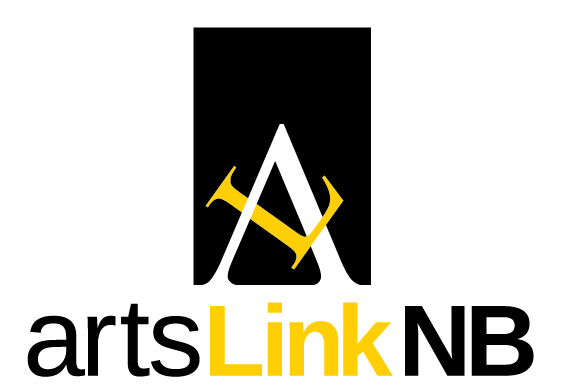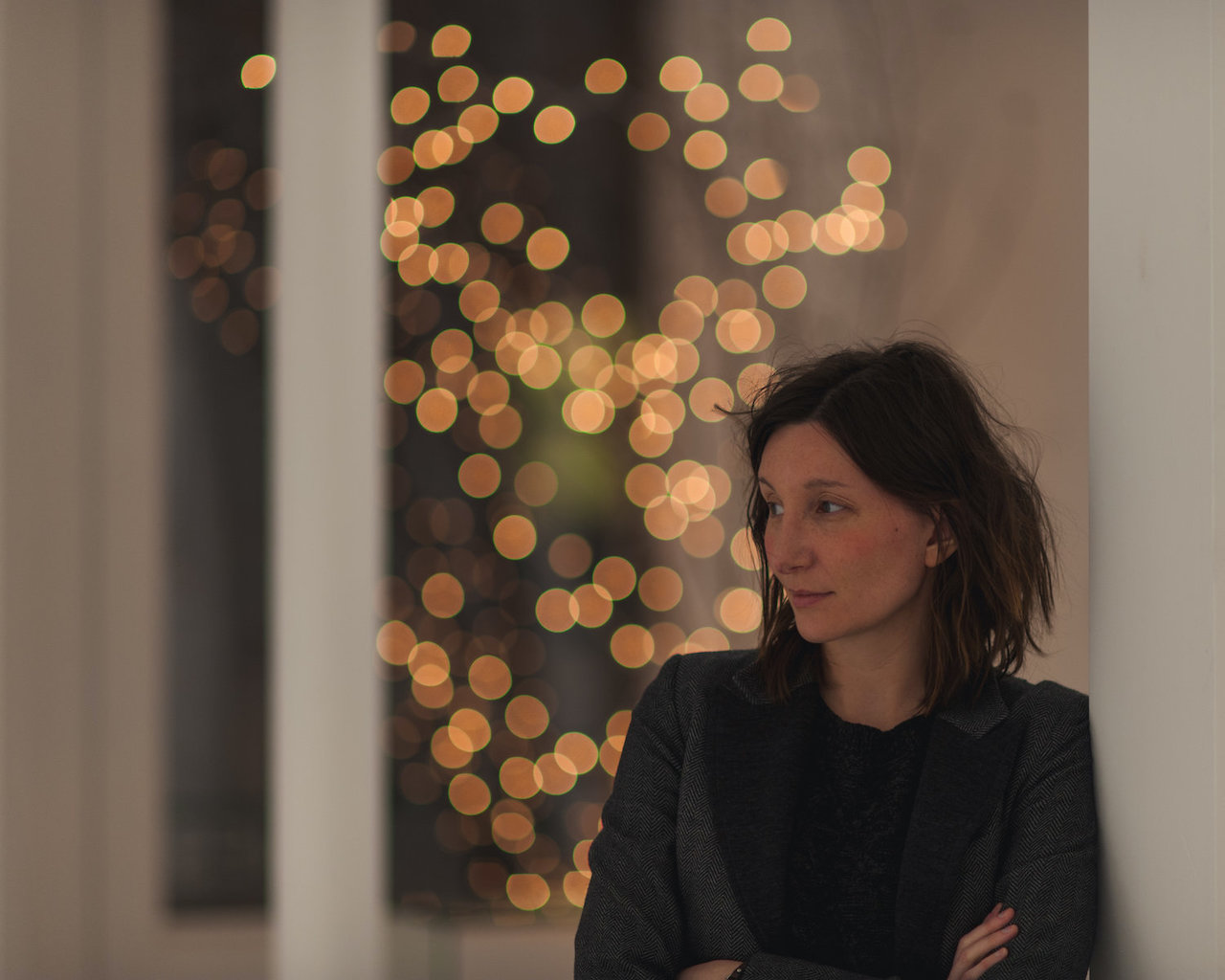Image sourced from the Jones Gallery website.
Sarah Jones is a visual artist, art historian, and curator. She has participated in solo and group exhibitions across Canada and abroad, and her work is held in the public collections of both the University of New Brunswick and the New Brunswick Art Bank. She oversees curation at the Jones Gallery in Saint John alongside her brother and occasionally teaches art history at the University of New Brunswick. Sarah’s current focus is on the Survey Project, an art installation where she will create one hundred paintings from October 2019 to October 2020 following a pre-determined route around the Saint John Harbour, through the South End, and about Courtenay Bay. The entire project will be exhibited at the Jones Gallery in October 2020 and is Sarah’s largest and most methodical project yet, surveying her favourite vantage points around the city of Saint John.
As someone who used to work for ArtsLink, how has the organization helped you in your career as an artist?
ArtsLink started right around when I opened my studio, and I always looked forward to going to their conferences, workshops, and symposiums to connect with fellow artists and learn. I took full advantage of everything they had to offer prior to working for them. After joining the team, I got to help with the CATAPULT program, which was an incredible experience for me since I really care about artists treating themselves and their work professionally, and that others treat them that way as well. I’m really glad that ArtsLink has the vision to offer programs like CATAPULT.
So how did you get into the arts field as a career? One of the things I noticed in your bio on the Jones Gallery website was that you have a Bachelor’s Degree and a Master’s Degree in Art History?
Yup, I was initially planning on pursuing a more academic route with my interest in art, but I was starting to miss being in New Brunswick, and I just wanted to come back to the province and do something more concrete in the community. So I came back after grad school, opened a studio, and things kind of developed from there. While I’d always been working on my own projects in school, they were never the focus of my academic research, and it was nice to be able to focus on them more now that they were basically my job. I like Saint John; the city is quite conducive to having an art business. Rent is affordable, there are great spaces for studios and galleries, and there’s already an existing arts infrastructure. The whole thing just worked for me.
And you continue to use your degree when you occasionally teach Art History at UNB?
Yeah, every year or two I’ll teach an introduction to art history class using a discussion format at the UNB Saint John. The focus of my studies in university was mostly museum theory, exhibition theory, and contemporary art, all of which help when curating, speaking, and writing about exhibitions when I’m working at the gallery. So I certainly make use of my academic background in my work there as well.
I imagine it’s not entirely uncommon in the art world, but what’s it like being both an artist and a gallery curator? What’s the overlap like?
It is actually pretty common. It’s useful in how it helps me think in terms of projects and how to prepare an exhibition and ensure my work is cohesive. It’s hard sometimes to pull back and look at your own work, so I really enjoy working with a curator on exhibitions of my own work. It’s nice having someone with that curatorial viewpoint looking at my work and thinking about my work because it’s hard sometimes to view your own stuff critically.
So being a curator helps with that in a way, because it allows you to take a step back and look at your own art.
Yeah, and it certainly helps with all the writing I have to do. I’m writing all the time for the gallery, so when I’m writing about my work, I don’t feel like it’s been a year since I last flexed my grant writing muscle. It’s also good for those times when it feels like I’m just day in and day out at the studio. There were a few years where my brother was the only one running the gallery while I spent all my time painting, and it was nice in the sense that it was some of the most productive I’ve ever been, but it was also very isolating. I really enjoy having a few different projects to work on so that I can spend a few days a week in the studio, some time working with other artists, and some time working on whatever projects are going on at the gallery. It helps give me that awesome sense of collaboration and breaks up the type of work I’m doing.
Going a bit topical here since you brought up the idea of isolation; how has the current situation (COVID-19) affected your work?
Well, the studio is pretty much the same. I’m there alone in a big empty building, whether it’s a pandemic or not, so my day to day hasn’t changed that much. It has caused me to lose the community infrastructure I would rely on during my breaks where I’d go out for coffee or food and have some brief social interaction. You come to rely on that interaction to feel connected to the rest of the world when you work alone, so losing it has been rough. Something I had started doing was a daily video thing on Instagram, which was helpful in that it forced me to keep going for those few months and stay in touch with fellow artists. I also have a dog that I bring to the studio with me, and now I’ve started bringing my cat too!
Out of all the different artistic mediums available, why do you think painting is the one that resonated the most with you?
Hmm, I guess because I’m not much of a 3D thinker. I always fail those tests that ask you to move an object in your head and figure out what it would look like rotated ninety degrees, and I think sculptors have an intuitive three-dimensional sense that I don’t. There are limitations to painting, of course. Sometimes I run into something that I can’t properly explore or articulate through painting. Hmm, you know, I actually haven’t really thought about that. “Why do I paint?” When teaching art history, I’m much more comfortable thinking about paintings than sculptures or architecture. I know it, but I’m not as comfortable with it. I guess it just has to do with the way I think about things.
While going over the Jones Gallery website, I noticed that you have several paintings listed there that share the same title except for a number. Is there any particular reason you revisit certain ideas multiple times across various works?
Okay, so I have a really hard time titling my work. Even if they’re different, I just call them “Landscape 1, Landscape 2, etc.” I can just never come up with titles.
Even so, all the pieces that share a title seem to explore similar themes or visual ideas.
Yeah, I do really like working in sets. It gives me a way to look at every aspect of an idea. Through these various depictions, I might be able to say something more impactful about whatever I’m trying to paint. Repetition with slight variation can sometimes lead to something better and better with each iteration. That’s the basic premise.
Also, not to be crass or commercial, but it works really well in terms of sales. Monet would paint twenty paintings of a single cathedral, and it would sell very well because people, as viewers, like cohesion. “Well, one person bought that cathedral painting, so I’ll buy a cathedral painting!” It really helps when presenting the work in a commercial context.
Tying it back to what we were just talking about, you could say that it’s one of the ways you explore three-dimensionality with your art by painting all these two-dimensional canvases that altogether form the full picture.
That’s so right; I was just thinking that.
Moving on to one of your current projects, can you talk a bit about your Survey Project? How is that going?
Well, I’ve started working on it more diligently these past few months, and I’m really enjoying it. It’s like that idea we talked about of doing a whole bunch of paintings of a particular subject so that you can see it more clearly, and it feels really good to see all these paintings pile up in the studio and create a visual map of the route I chose around Saint John. Also, I think the experience will be really helpful for me going forward with future projects.
What inspired you to do this project?
Years ago, I did this thing where I decided I would do a small painting a day for a hundred days, and it worked really well for me. I liked the schedule it gave me, it helped me stay focused and produce this large body of work, and it was something I could talk about with my audience as I was working on it. The project was good all-around in terms of marketing, audience engagement, and even in terms of how it kept me in the studio working during a period where I often find it hard to get stuff done.
So I was looking to prepare an exhibition for the coming fall, and looking back, I realized how well the idea worked. I also wanted to do something where the audience could follow the entire process of preparing an exhibition. When they see the finished product, it’s not as much of a surprise, but hopefully, the audience is more invested in the work they’re looking at after following it through the entire creative process. I know I’m not reinventing art by doing one hundred paintings of Saint John over a year, but I hope that the story behind the pieces will give people something interesting to think about when they look at them.
Do you have any projects planned for after the Survey Project in the fall?
Well, I do have this project coming up on the historical representation of the maritime landscape that will probably be going on for a few years. Within this project’s scope, I also want to spend time exploring the figures and people depicted in these historical landscapes. The idea of the maritime folk, who they are and how they are seen in both historical and current artwork, is a topic that really interests me. Usually, they’re portrayed in this idealized way as “fisherfolk” or as quaint, out of time people, but what I want to look at is if they’re depicted as simple or complicated, do they have agency or a voice? I’m not sure what I’m going to do with this, but I definitely want to explore it in some meaningful way.

